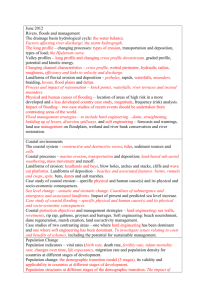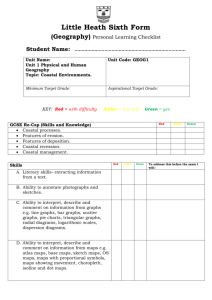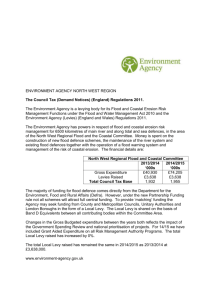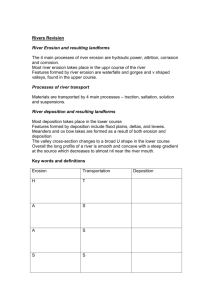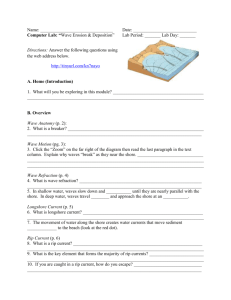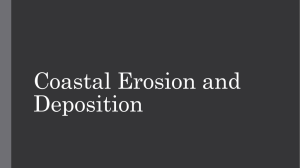Geography
advertisement
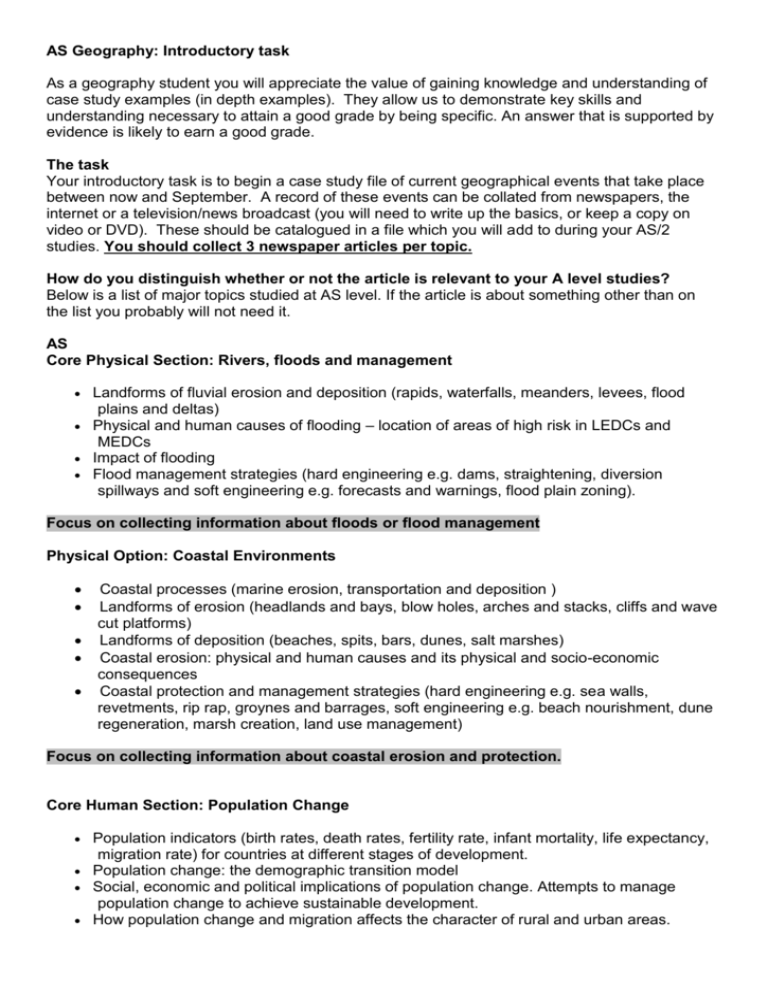
AS Geography: Introductory task As a geography student you will appreciate the value of gaining knowledge and understanding of case study examples (in depth examples). They allow us to demonstrate key skills and understanding necessary to attain a good grade by being specific. An answer that is supported by evidence is likely to earn a good grade. The task Your introductory task is to begin a case study file of current geographical events that take place between now and September. A record of these events can be collated from newspapers, the internet or a television/news broadcast (you will need to write up the basics, or keep a copy on video or DVD). These should be catalogued in a file which you will add to during your AS/2 studies. You should collect 3 newspaper articles per topic. How do you distinguish whether or not the article is relevant to your A level studies? Below is a list of major topics studied at AS level. If the article is about something other than on the list you probably will not need it. AS Core Physical Section: Rivers, floods and management Landforms of fluvial erosion and deposition (rapids, waterfalls, meanders, levees, flood plains and deltas) Physical and human causes of flooding – location of areas of high risk in LEDCs and MEDCs Impact of flooding Flood management strategies (hard engineering e.g. dams, straightening, diversion spillways and soft engineering e.g. forecasts and warnings, flood plain zoning). Focus on collecting information about floods or flood management Physical Option: Coastal Environments Coastal processes (marine erosion, transportation and deposition ) Landforms of erosion (headlands and bays, blow holes, arches and stacks, cliffs and wave cut platforms) Landforms of deposition (beaches, spits, bars, dunes, salt marshes) Coastal erosion: physical and human causes and its physical and socio-economic consequences Coastal protection and management strategies (hard engineering e.g. sea walls, revetments, rip rap, groynes and barrages, soft engineering e.g. beach nourishment, dune regeneration, marsh creation, land use management) Focus on collecting information about coastal erosion and protection. Core Human Section: Population Change Population indicators (birth rates, death rates, fertility rate, infant mortality, life expectancy, migration rate) for countries at different stages of development. Population change: the demographic transition model Social, economic and political implications of population change. Attempts to manage population change to achieve sustainable development. How population change and migration affects the character of rural and urban areas. Settlement case studies – comparing the following areas – an inner city area, a suburban area, rural-urban fringe, rural settlement. To include characteristics such as housing, ethnicity, age structure, wealth and employment and the provision of services. The implications of these for social welfare. Focus on collecting information about population issues relating to India, China, UK and Uganda Human Option: Health Issues Global patterns of health, morbidity and mortality: health in world affairs. The study of one infectious disease (e.g. malaria, HIV/AIDS) its global distribution and its impact on health,economic development and lifestyle. The study of one non-communicable disease (e.g. coronary heart disease, cancer) its global distribution and its impact on health, economic development and lifestyle. Food and health – malnutrition, periodic famine, obesity. Contrasting health care approaches in countries at different stages of development. Health matters in a globalising world economy – transnational corporations and pharmaceutical research, production and distribution; tobacco transnationals. Regional variations in health and morbidity in the UK Focus on collecting any health issues in the current news After reading and highlighting the information in the articles you may find it useful to provide a summary of the details. Use the table below to help structure some of your summaries Case study example eg Boscastle flood Location Pre-disaster potential (May not be applicable) Event Disruption (May not be applicable) Relief (May not be applicable) Recovery (May not be applicable) Time Reconstruction (May not be applicable) Other Description of case study Identify where the event/ disaster occurred Identify why the event occurred/ is occurring Timings, size, nature Details of immediate damage Types amount of relief / aid required Nature of recovery programme Time scale of the continuing impact of the event may be good as well as bad! The amount and type of long term aid required Good luck with your GCSE results in summer. Look forward to seeing and working with you. Judith
